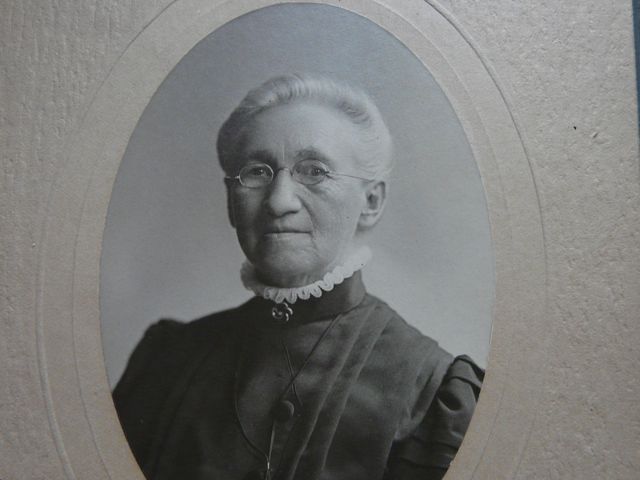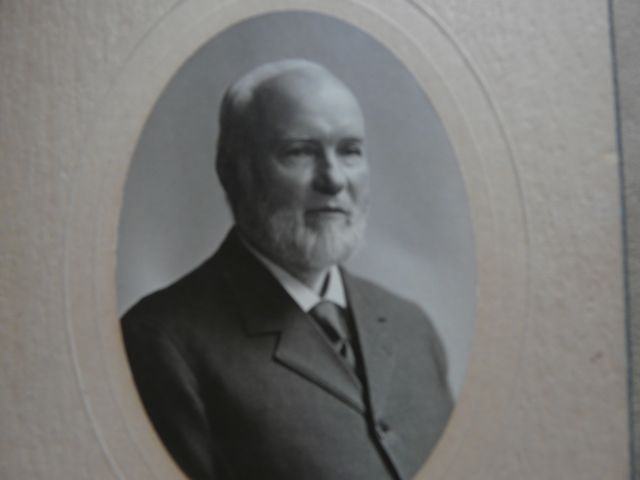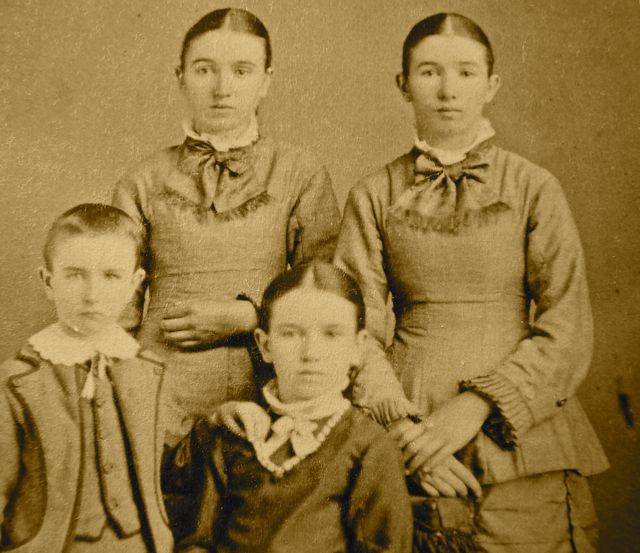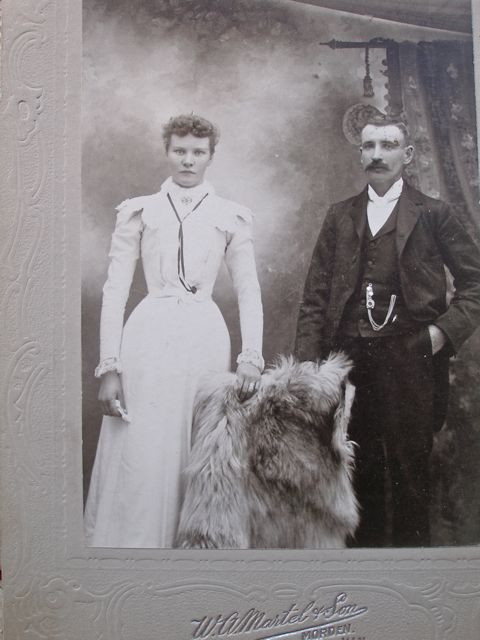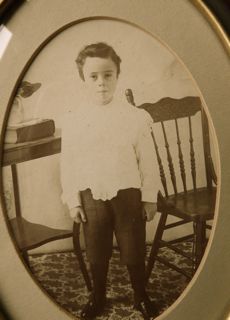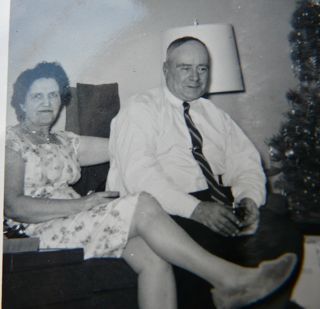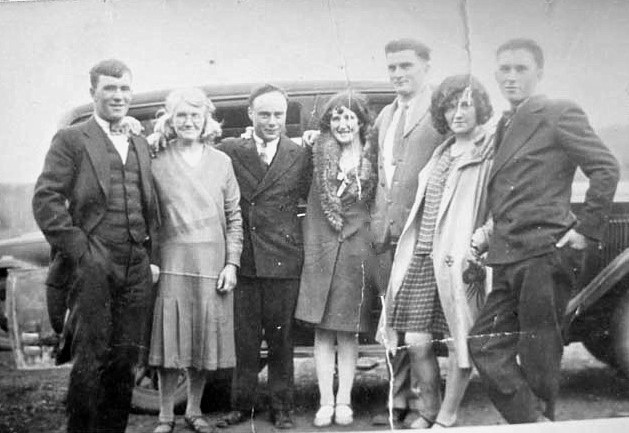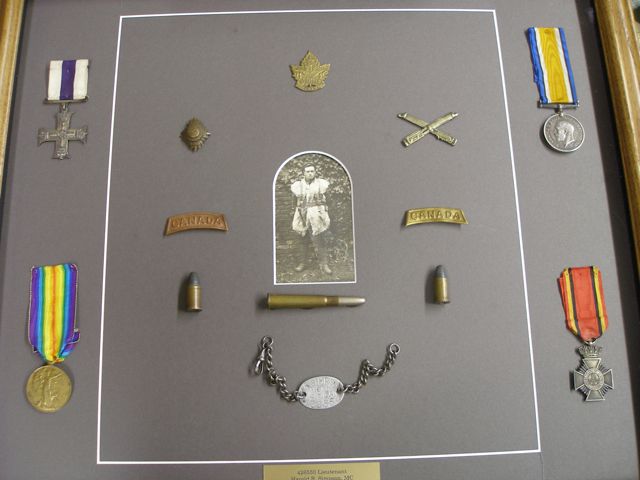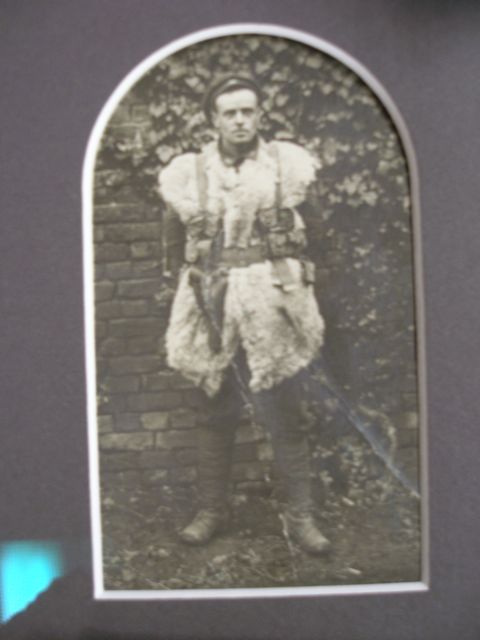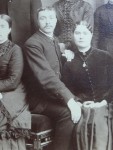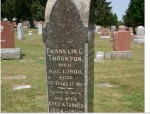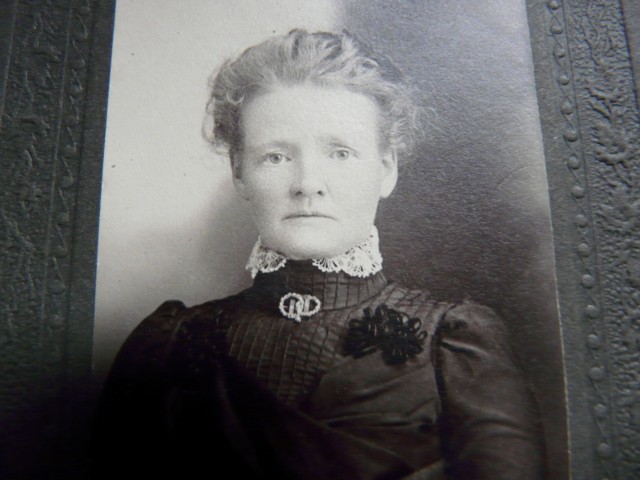Nathaniel Powers (1754-1804), born in the USA and the father
of Nathaniel Hart Powers (1787-1862). The Powers family
moved to Canada around 1790 and Nathaniel was to die in Leeds
County Ontario in 1804. The family played a very important
role in the Revolutionary War so it is unclear why they moved
to Canada.
Here is an account of Nathaniel’s Revolutionary War
service, provide by Robert Dorsett.
This is an attempt to reconstruct the activity of Nathaniel
Powers (b. 1754) throughout his military career during the
Revolutionary War until Nathaniel’s return to Richmond 19
July 1782. Records for the activity of New Hampshire men in
the Revolutionary War are sparse and Col. Joseph Cilley,
under whom the Powers brothers served for much of their
service, was evidently poor at documenting his activity
throughout the war. However, much of the documentation for
this reconstruction was accumulated from historical
websites, four volumes of ‘Rolls of soldiers during the
Revolutionary war’ and various other sources. In addition,
in a letter dated September 9 1929, Ivy Blanche Powers
Bradford, (b. 19 May 1870) in Barrington, IL, a devoted
genealogist and great-granddaughter to Nathaniel Powers,
claimed that her great-grandfather “was a corporal in the
American Revolution and served in the battles of
Ticonderoga, Bennington, Saratoga and Yorktown.” This was
published in The Abridged Compendium of American Genealogy
Vol III, p. 84 by Frederick A. Virkus 1928. Following this
lead and assuming this is correct, I have traced the
probable course of maneuvers for Nathaniel Powers and his
brothers Abner, Thomas, Joseph, Whitcomb and Simeon during
this eventful time in history. Throughout much of the war
the brothers stayed together as shown below.
At the burial site in Kane Co., Illinois it states that
Abner Powers enlisted Jan 1, 1777 in the NH 1st Regiment and
fought at the Battles of Bennington, Saratoga, Valley Forge
and Yorktown.
The name ‘Nathaniel Powers’ appears in the George Washington
Papers Volume 5 (June 1776 to August 1776) pg. 53. This is
the exact time of the battle of Bunker Hill and it is
documented that Joseph Powers from Richmond was there.
However, it is not clear that this is Nathaniel Powers b.
1754, and it is possible that this was his father or of no
immediate relation.
Rolls of Soldiers During the Revolutionary War, Vol. I, pg.
468-47:
“Men in First N.H. Regiment enlisted during the war 1776, A
return of the Mens Names Inlisted During the War in the
First New Hampshire Regiment and the towns they went for:”
- Simeon Powers
- Nat’l Powers
- Joseph Powers
1777
1 Jan Nathan Powers of Charlestown, Thomas and
Abner Powers of Richmond enlisted in New Hampshire 1st
Regiment: (The History of the First New Hampshire Regiment
in the War of the Rebellion, by Frederic Kidder 1973 p.
152).
February Gen. George Washington summons to the New
Hampshire Committee of Safety to order troops to reinforce
Fort Ticonderoga as soon as they were recruited.
7 May Nathaniel Powers volunteered to join Col. Benjamin
Bellow’s the New Hampshire Regiment of Militia and was sent
to reinforce the northern army at Fort Ticonderoga. Brothers
Whitcomb, Simeon and Nathaniel Powers were listed on the
payroll as privates in Col. Benjamin Bellows Regiment of
Militia which was as reinforcements at Fort Ticonderoga on
Lake Champlain. Fort Ticonderoga (Iroquois for “place
between two waters”) was commanded at this time by Brig. Gen
Enoch Poor: (The Rolls of Soldiers in the Revolutionary War
Volumes I-IV).
The Battle of Ticonderoga May 10 – July 6, 1777
18 Jun Nathaniel Powers is discharged for Ticonderoga
along with Col. Bellows Regiment arriving on the 3rd-4th of
July to reinforce the garrison there. With immediate notice
of Gen. Burgoyne approaching Fort Ticonderoga the militia
was sent right back to reinforce the defense there, Colonel
Bellows reporting to Major Gen. St. Clair.
The British under Gen. John Burgoyne lead the British
flotilla from the Flagship Thunderer, departing Quebec 13
June 1777and from St. Johns (now St. Jean), Canada, on June
17, 1777 with a total force of some 9,000 men, including
about 4,200 British regulars, 4,000 German troops, and
several hundred Canadians and Indians. The fleet landed at
Crown Point on June 27th and remained there until
re-embarking for Ticonderoga July 1st. Burgoyne embarked.
From the 2nd to the 4th of July, Burgoyne emplaced artillery
upon the high ground commanding Fort Ticonderoga. Observing
this, Major General Arthur St. Clair with about 3,400 troops
was forced to withdrawal in two echelons by evacuation under
the cover of darkness down the military road to Castleton
and the British claimed the fort on 6 July 1777. St. Clair
and his 2,500 American troops arriving at Castleton VT on 7
July 1777 would then move through Castleton and travel east
to Rutland, VT then turn south to Manchester, VT and finally
head southwest to Fort Miller, NY (on today’s US Route
4). Just south of Fort Miller, they would stand and meet the
British at the Battles of Saratoga.
The main body of St. Clair’s force retreated by the
road to Hubbardton. It was closely followed by General
Fraser with twenty companies of Englishmen, supported by
Maj. Gen. Frederick Riedesel with three Brunswick
battalions. Fraser came up with the rear-guard of the
Americans, under Colonel Warner, at Hubbardton, on the 7th
of July, was sharply attacked, and outflanked. He was in
danger of being driven back when Riedesel came to his
assistance. The Americans were repulsed.
From: Saratoga by Robert M. Ketchum 1997, p. 203
“St. Clair’s two aides, Livingston and Dunn were galloping
along the road to rally reinforcements. They were to direct
Colonel Bellows to march immediately to support the rear
guard, assuring him that he could expect help if it was
needed, since the main body was under arms and ready to
march. But as the two messengers drew closer to the
militiamen’s camp they met those troops “marching with
speed” toward Castle Town – running away from Hubbardton.
They spotted Colonel Bellow’s and delivered St. Clair’s
orders, but in spite of what were apparently heroic efforts
on the colonel’s part, not a man made a move in the
direction of the fighting. The troops simply refused to
obey. As Livingston described Bellow’s predicament, “An
unaccountable panic had seized his men”.
By this time the men of the New Hampshire regiment had lost
their faith in St. Clair and showed it. Their loss is not
exactly known, but about two hundred stragglers and wounded
men were that day made prisoners. “The Brunswickers had
twenty-two men killed or wounded, the British one hundred
and fifty-five.”
12 July St. Clair arrived, with the remnants of his
Ticonderoga command, at Fort Edward after a
Saturday march of one hundred and ten miles, stragglers
gradually trickling in to rejoin with the troops.
17 July In the astonishment and dismay that came to
New England following the army’s failure at Fort
Ticonderoga, the Vermont authorities sent a frantic appeal
for help to their sister states: New Hampshire,
Massachusetts, New York, and Connecticut. Only in New
Hampshire was the response prompt and decisive. The State
Legislature met at Exeter in special session, and took
immediate action.
19 July John Stark, who had been in retirement at
Derryfield since his resignation from the Continental Army
on March 22, was urgently summoned to Exeter. There the
Legislature on conferred upon him the rank of Brigadier
General of State Militia; urged men to enlist for two months
under Stark’s command; instructed them to muster into
the service at old Fort No. 4 in Charlestown; and offered
each man $10 a month and travel money. The whole expedition
was to be solely a State effort, and Stark was to operate
his forces in such a manner as “. . . shall appear
expedient to you.”
In three days, so great was the magnetism of Stark’s
name and reputation that 1405 New Hampshire officers and men
enlisted, and were en route to Charlestown. The names of all
these volunteers have been preserved in Volume XV of the
State Papers of New Hampshire. Among them were 163 veterans
of Stark’s command at Bunker Hill in June, 1775.
General Stark organized his little army into three
regiments. That commanded by Colonel Moses Nichols of
Amherst had ten companies. That headed by Colonel Thomas
Stickney of Concord had ten companies. And that commanded by
Colonel David Hobart of Plymouth had five companies. Starks
brigade of militiamen was finally assembled by August 13th.
However, his forces lacked uniforms and fought with family
firearms as he did not have sufficient time to equip them
properly.
21 July Whitcomb and Joseph Powers of Charlestown
enlisted in Abel Walker’s Company of Col. David Hobart’s
Regiment: Roll of New Hampshire Soldiers at the Battle of
Bennington compiled by Geo. C. Gilmore, p. 32.
Mid-Aug. General Burgoyne, who was advancing south
from Canada, committed the tactical error of out-marching
his own supply teams. As he neared Saratoga, he detached a
force of Hessians under Lt. Col. Frederick Baum to capture
the supplies, munitions and horses held by the
Revolutionaries at a nearby supply depot in Vermont. This
force was met and decisively defeated by a brigade of New
Hampshire Militiamen led by Colonel John Stark, a victory
which contributed to Burgoyne’s ultimate defeat at
Saratoga. The battleground was Bennington, Vermont.
Charlestown, New Hampshire was once known simply as Village
Number 4. The restored “Fort at No. 4″ at
Charlestown is the fort from which Stark and his troops,
including Nathaniel’s two brothers departed for Bennington.
The Battle of Bennington Aug. 16, 1777
16 Aug. German Lieutenant Colonel Baum was mortally
wounded, his force destroyed along ??
Evening with a substantial number of the five hundred
and fifty reinforcements rushed to his aid. The final
figures on Burgoyne’s losses at the two battles of
Bennington were devastating and it is believed that this
battle was pivotal in weakening the British & Gen.
Burgoyne. The Hessians lost two hundred-seven dead with
seven hundred taken prisoner. The number is believed
accurate as compensation for all Hessian soldiers lost had
to be paid to their respective Prince. There has never been
an accounting for Indians or Loyalists lost in the two
engagements. American casualties amounted to 30 dead, 40
wounded.
Battles of Saratoga September 19 – October 7, 1777
Traveling across the Hudson River eventually to Stillwater,
NY September 19 1777 Capt. Isaac Farwell’s 7th Company, NH
1st Regiment reporting to Col. Joseph Cilley fought the
first battle of Saratoga at Bemis Heights under the command
of Maj. Gen. Benedict Arnold.
The second battle of Saratoga was at Freeman’s Farm, October
7, 1777. By October 7th the British had to make a stand if
their conquest of the Hudson-Champlain Valley was to
succeed. The 1st New Hampshire entered the action facing
crack grenadiers and light infantry. So hot was the firing
that Cilley’s men had to move forward out of their own
smoke to fire again and the grenadiers went down in heaps.
Amid the cheers of his men, Col. Cilley straddled one of the
captured British 12-pounders and, waving his sword, shouted
he was “dedicating it (the cannon) to the patriot
cause.” Jubilantly he ordered it turned on the
retreating enemy. With the British (Burgoyne) surrender at
Saratoga the Northern Campaign was over. This battle is
considered the turning point in the war.
Joseph and Simeon Powers are listed as privates and members
of the 1st Regiment that did participate in the battles of
Saratoga.
December Brig. Gen Enoch Poor’s New Hampshire 1st, 2nd
and 3rd regiments were requested to join Gen. Washington at
Valley Forge, Col. Joseph Cilley in charge of the 1st
Regiment. Joseph and Simeon (wounded on furlough) from NH
were listed as present at Valley Forge in the winter of
1777/1778.
1778
5 Feb. Nathaniel Powers received pay for serving
with Col. John Stark’s Militiamen: ₤20 plus a small amount
for traveling expenses. This must have been for services
rendered prior to November as General Stark, with his
arthritis, was well know for his inability to tolerate the
cold weather and refused to go to battle in the winter
months. Nathaniel Powers then enlisted 8 days later to serve
under Capt. Isaac Farwell’s 7th Company in Col. Joseph
Cilley’s New Hampshire 1st Regiment.
13 Feb Nathaniel enlisted at Charlestown, NH in
Capt. Isaac Farwell’s 7th Company under Col. Stark’s
Regiment (commanded at this time by Col. Joseph Cilley as
Stark resigned Feb. 22, 1777, where remained with brothers
Abner and Thomas for the duration of the war as it appears
on the muster roll 13 Feb 1778 at Walpole, NH. On Jun 19,
1778 Gen. Washington and forces leave Valley Forge and
arrive in Monmouth 9 days later.
28 Jun The Battle of Monmouth: Col. Joseph
Cilley and company present.
1779-1780
For his valiant service at the Battle of Monmouth, which
ended in a draw June of 1778, the New Hampshire Legislature
presented Col. Cilley with a pair of pistols in March, 1779.
These he took with him that summer on Sullivan’s
expedition against the Indians in upper New York.
Private Nathaniel Powers received $134.48 for serving with
the 7th Company 1st Regiment and was found belonging to this
regiment commanded by Col. Joseph Cilley prior to Jan 1,
1780. Nathaniel was promoted to Corporal in 1780.
1781-1782
1 Jan Nathaniel Powers received $83.30 for
service in the 1st regiment Commanded by Col. Joseph Cilley.
7 Feb Nathaniel Powers received an advance of $25
at Exeter. In 1781, Nathaniel was paid $88 for service in
Cilley’s Regiment, 7th Company.
The Battle of Yorktown Sept. 28 – Oct. 17, 1781
28 Sep The Army marched to Yorktown, engaging in
battle where British Major General Cornwallis and his troops
surrendered to General Washington’s Valley Forge
survivors 19 Oct. 1781. The Battle of Yorktown was the final
battle of the war.
On September 28, 1781, Gen George Washington and Gen.
Rochambeau, along with Gen. Lafayette’s troops and
3,000 of de Grasse’s men, arrived at Yorktown. In all,
there were approximately 17,000 men converging on
Cornwallis’ camp. The stage was set for the final
showdown in America’s fight for independence.
The combined forces approached Yorktown from the South. The
French, under Rochambeau, formed the left flank of the
attack, while the American troops, under Washington and
Lafayette, approached from the right. The city was soon
surrounded and under heavy fire. On October 14, the
Franco-American forces captured 2 major British redoubts.
Cornwallis’ options were running out. He even tried
sending blacks infected with smallpox over enemy lines in an
attempt to infect the American and French troops. After a
futile counterattack, Cornwallis offered to surrender on
October 17. On the 19th of October, the papers were signed
and he officially surrendered. This would be the final major
battle of the Revolutionary War.
2 April 1782 Rolls of Soldiers During the Revolutionary
War, Vol. III, pg. 597. State of New Hampshire Charlestown
“At a Legal Town Meeting held at Charlestown in Said state
on the sixth day of Feb 1781 a Moderator being chosen the
following vote was passed, viz- That the selectmen make a
return to the Secretaries (sic) office in said state of the
number of Men from the said town now in actual service also
the number of Persons supported by the Town belonging to the
families of those persons above mentioned – Simeon
Powers, Nathaniel Powers, Thomas Powers, Abner Powers”,
etc..
19 July 1782 Rolls of Soldiers During the Revolutionary War,
Vol. III pg. 518. Nathaniel Powers made his return to
Richmond.

